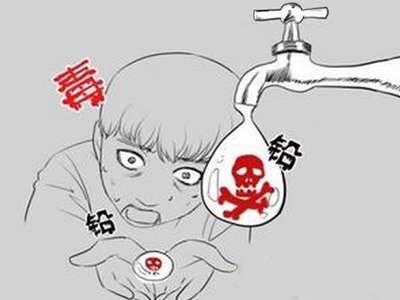第十章 把鉛攆出去
In the late 1940s, a graduate student at the University of Chicago named Clair Patterson (who was, first name notwithstanding, an Iowa farm boy by origin) was using a new method of lead isotope measurement to try to get a definitive age for the Earth at last. Unfortunately all his samples came up contaminated—usually wildly so. Most contained something like two hundred times the levels of lead that would normally be expected to occur. Many years would pass before Patterson realized that the reason for this lay with a regrettable Ohio inventor named Thomas Midgley, Jr.
20世紀40年代末,芝加哥大學一位名叫克萊爾·彼得森(盡管姓彼得森,他原先是艾奧瓦州的一個農家孩子)的研究生在用一種新的鉛同位素測量法,對地球的確切年齡作最后的測定。不幸的是,他的巖石樣品全部給污染了──而且還污染得很厲害。大多數樣品里的鉛含量超過正常濃度的大約200倍。許多年以后,彼得森才明白,問題出在俄亥俄州一個名叫小托馬斯·米奇利的人身上。

Midgley was an engineer by training, and the world would no doubt have been a safer place if he had stayed so. Instead, he developed an interest in the industrial applications of chemistry. In 1921, while working for the General Motors Research Corporation in Dayton, Ohio, he investigated a compound called tetraethyl lead (also known, confusingly, as lead tetraethyl), and discovered that it significantly reduced the juddering condition known as engine knock.
米奇利是一名受過訓練的工程師,要是他一直當工程師,世界本來會太平一些。但是,他對化學的工業用途發生了興趣。1921年,他在位于俄亥俄州代頓的通用汽車研究公司工作期間,對一種名叫四乙鉛的化合物作了研究,發現它能大大減少震動現象,即所謂的發動機爆震。
Even though lead was widely known to be dangerous, by the early years of the twentieth century it could be found in all manner of consumer products. Food came in cans sealed with lead solder. Water was often stored in lead-lined tanks. It was sprayed onto fruit as a pesticide in the form of lead arsenate. It even came as part of the packaging of toothpaste tubes. Hardly a product existed that didn't bring a little lead into consumers' lives. However, nothing gave it a greater and more lasting intimacy than its addition to gasoline.
到20世紀初,大家都知道鉛很危險,但它仍然以各種形式存在于消費品之中。罐頭食品以焊鉛來封口;水常常儲存在鉛皮罐里;砷酸鉛用做殺蟲劑噴灑在水果上。鉛甚至還是牙膏管子的組成材料。幾乎每一件產品都會給消費者的身體里增加一點兒鉛。然而,人接觸機會最多、接觸時間最長的,還是添加在汽油里的鉛。












